Mirror House by Johan Selbing and Anouk Vogel camouflages with its surroundings
This house in the Dutch city of Almere by Swedish architect Johan Selbing and Swiss landscape architect Anouk Vogel is completely covered in reflective glass to allow it to blend in with its surroundings (+ slideshow).
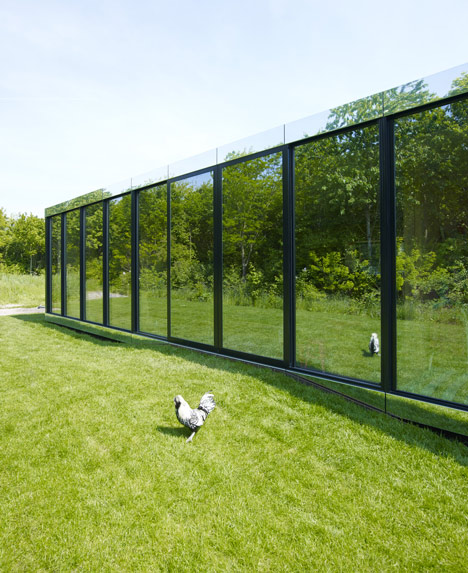
Selbing and Vogel designed the private house for a plot in an experimental housing development in Almere - a city that was only established in 1976 but now has over 195,000 residents - in response to a competition brief calling for a building that would relate to a site within a forest clearing.

The house's simple boxy shape is constructed from an aluminium frame that supports panels of toughened mirrored glass, with a mirrored composite panel running around the top and bottom edges of the facade.

"The Mirror House is a private villa with a facade consisting entirely of reflective glass, which acts as a camouflage and an obstruction of the view of its interior," explained the architects.
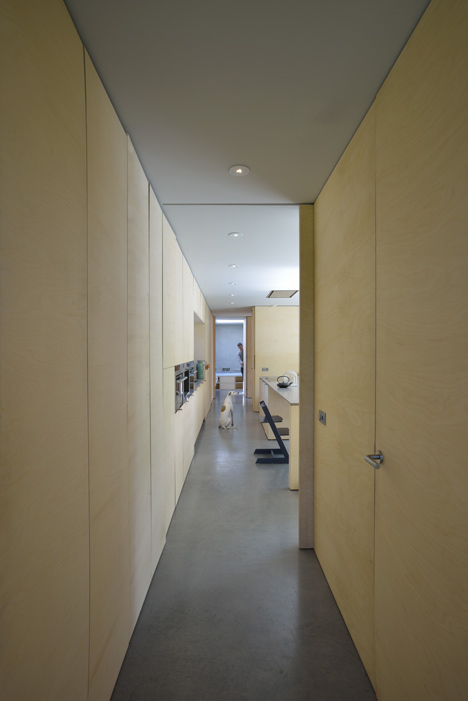
Doors sits flush against the facade and are only noticeable thanks to handles that project from the surface and a change in the ground level that rises to meet the height of the floor inside the building.
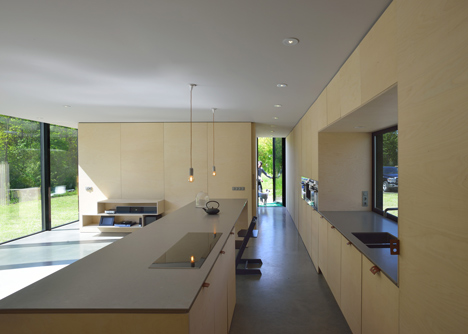
An entrance at the the side of the building leads into a compact interior with a home office at one end and master and guest bedrooms at the other.
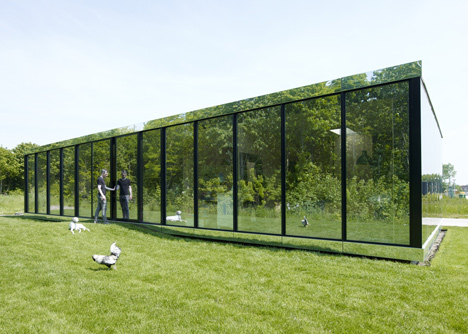
Sliding partitions between these rooms and the open-plan kitchen and living space can be opened or closed to meet different requirements.
"Long sight lines in the interior make the house appear larger from the inside, and anchor it to its surroundings," the architects pointed out.
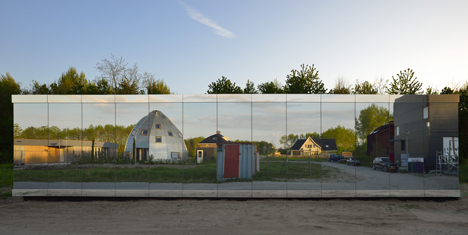
Surfaces are covered in pale birch multiplex panels that compliment the light-filled interior and views of the nearby trees.
Built-in storage covers one wall and is punctuated by a secret window that looks onto the street but is invisible from outside.

Selbing and Vogel were one of twelve winning entrants in the design competition. They were invited to construct their building but had to source a client to pay for it.
"In dialogue with the client, the competition proposal was worked out to the smallest detail, taking a demand for optimum accessibility into consideration," the architects added.
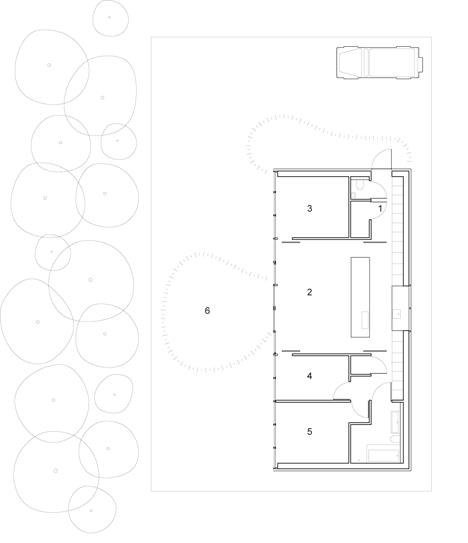
Photography is by Jeroen Musch.
Here's a project description from the architects:
Mirror House, Almere
The Mirror House is a private villa with a facade consisting entirely of reflective glass, which acts as a camouflage and an obstruction of the view of its interior. The floor plan has been designed to be as compact as possible, with the possibility to adapt to different lifestyles. All interior walls are covered with a birch multiplex panel, whose warm appearance contrasts with the elegant and strict glass facade.

After De Realiteit and De Fantasie, the third edition of small experimental housing settlements in Almere has been launched under the title De Eenvoud. The brief of the competition called for an individual house with a strong relation to its surroundings. The twelve winning teams were given the possibility to realise their designs in an open area in the forest of Noorderplassen-West, but had to find the buyers of the houses themselves.

The Mirror House is a private villa with a facade consisting entirely of reflective glass, which acts as a camouflage and an obstruction of the view of its interior. The floor plan has been designed to be as compact as possible, with the possibility to adapt to different lifestyles. In dialogue with the client, the competition proposal was worked out to the smallest detail, taking a demand for optimum accessibility into consideration.

The original concept with a slightly raised floor (for a better view), sliding doors, built-in cupboards and a single-level layout, has therefore been further refined. Long sight lines in the interior make the house appear larger from the inside, and anchor it to its surroundings. All interior walls are covered with a birch multiplex panel, whose warm appearance contrasts with the elegant and strict glass facade.

Location: De Eenvoud, Almere, The Netherlands
Client: Private
Project team: Johan Selbing, Anouk Vogel
Size: 120 m2
Program: Private house
Process: competition 2006
Start construction: 2012
Completion: 2013
Structural Engineering: Buro voor Bouwadvies BV, Dalfsen
Installation Advice: Earth Energie Advies BV, Boskoop
Contractors: Bouwbedrijf Jadi BV, Genemuiden Slump Fictorie, Hoogeveen (facade)